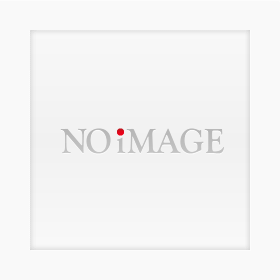Introduction to UV Curing Technology: Understanding Curing Defect Countermeasures for Practical Application
S10505
★Detailed introduction to selection methods related to the application of hardening compounds ★Oxygen-induced hardening inhibition, hardening shrinkage, and yellowing, along with their causes and countermeasures.
Speaker Masahiro Sumioka, Ph.D., Emeritus Professor, Osaka Prefecture University Vice President of the Photopolymer Discussion Group, Council Member of the Radtech Research Committee, Secretary of the New Frontier Materials Subcommittee of the Osaka Industrial Research Association Target Audience: Engineers, researchers, and relevant departments interested in UV curing technology and microfabrication technology Venue Kyoto Research Park, Meeting Room A [Kyoto] 5 minutes walk from "Tamba-guchi Station" on the JR Sagano Line Date and Time May 19, 2011 (Thursday) 13:00-16:30 Capacity: 30 people *Registration will close once full. Please apply early. Participation Fee 49,350 yen (tax included, lunch included, text costs included) for up to 2 people from one company *New members who apply for the first time by May 9 will receive an early bird discount price of 44,100 yen ◆ Early Bird Discount: Please select "1 slot for 2 people: Early Bird Discount" when registering ◆ For applications from the same corporation with 3 people, the fee is 67,200 yen.
Inquire About This Product
basic information
UV curing has recently become widely used as a fast and economical surface processing technology that contributes to environmental conservation. It is fundamentally a simple technology, involving only the selection of light sources and formulations, as well as the choice of application fields. Therefore, it is not a difficult technology for newcomers to utilize. However, those who do not have a good understanding of the basic principles of this technology may encounter unexpected difficulties. In this course, we will provide a detailed introduction to UV radical curing as the foundation of UV curing technology, from a practical standpoint. Specifically, we will discuss important considerations regarding light sources and the selection methods for curing formulations in relation to their applications. Furthermore, we will explain the challenges of oxygen inhibition, curing shrinkage, and yellowing, along with their causes and countermeasures. We will also cover recent topics such as the significance of selecting UV-LEDs, thiol-ene UV curing methods, and hyperbranched polymers. Additionally, we will introduce the basics and current status of UV cationic curing and UV anionic curing in comparison to UV radical curing.
Price information
New members who apply for the first time by May 9 will receive an early bird discount price of 44,100 yen.
Price range
P2
Delivery Time
P2
Applications/Examples of results
1. Introduction 2. Selection of Light Source 3. UV Radical Curing 3.1 How to Differentiate Applications and Formulations of UV Curing 3.1.1 Selection of Initiators Matching of Light Source Wavelength Selection of Initiators in the Presence of Colorants and UV Absorbers 3.1.2 Selection of Oligomers and Monomers 3.2 Selection of Formulations for Hard Cured Materials (Hard Coatings) and Soft Cured Materials (Adhesives) Relationship Between the Structure of Monomers and Oligomers and the Physical Properties of Cured Materials 4. Challenges and Countermeasures in UV Radical Curing 4.1 Inhibition of Curing by Oxygen and Its Countermeasures 4.2 Curing Shrinkage and Its Countermeasures 5. Yellowing: Yellowing Immediately After UV Curing and Yellowing in Weather Resistance Tests of Cured Materials 5.1 Initiators 5.2 Yellowing from Polymerization Inhibitors and Monomer and Oligomer Sources and Their Countermeasures 6. Current Status and Prospects of UV Ion Curing 6.1 Current Status and Prospects of UV Cationic Curing and UV Anionic Curing to Compensate for the Disadvantages of UV Radical Curing 7. Conclusion: Future Prospects of UV Curing Technology [Q&A and Business Card Exchange]
Company information
Our company has developed its business from "seminar planning" to various forms such as "lecturer dispatch," "publishing planning," "technical consultant dispatch," "trend research," "business matching," and "business development consulting," in order to support clients in a wide range of fields including chemistry, electronics, automotive, energy, medical devices, food, and building materials. By doing so, we have advanced our company and opened up new markets. AndTech promises to continue listening to our clients' voices, entering the business areas and markets they desire, and to remain a company that is loved by our clients, as we share their challenges, think together, and forge new paths.


